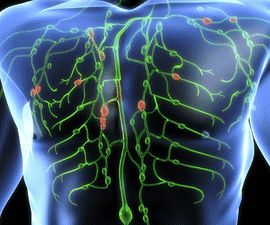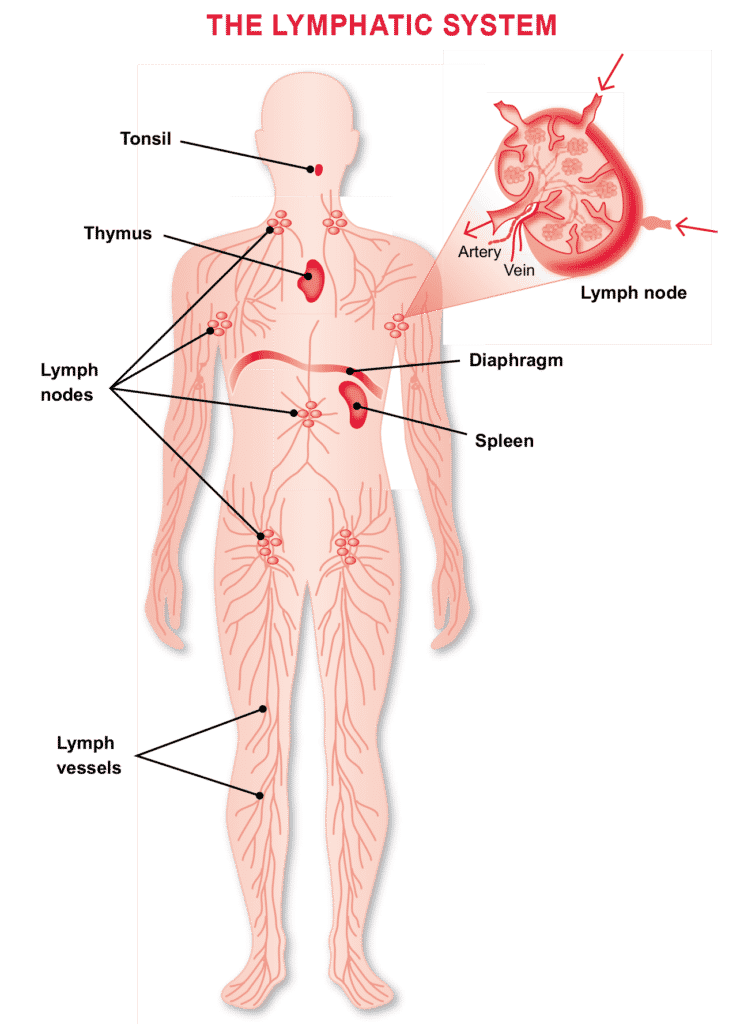The Lymphatic System

As shown in the diagram below, the lymphatic system is a circulatory system that is made up of a spidery network of thin tubes called lymph vessels. Similar to blood vessels, lymph vessels branch out into all tissues of the body. While people can clearly see blood vessels, especially at their wrists and on the top of the hand, lymph vessels are invisible to the naked eye.

Lymph vessels carry lymph, a type of liquid that contains lymphocytes. Within this huge network of vessels are groups of small, bean-shaped organs called lymph nodes. Thousands of lymph nodes are found throughout the body, including the elbows, neck, armpits, chest, abdomen, and groin.
Lymph fluid flows through lymph nodes and specialized lymph tissues such as the spleen, tonsils, bone marrow, and thymus gland. Lymph nodes filter lymph fluid, removing bacteria, viruses, and other foreign substances from the body. If a large number of foreign substances are filtered through a series of nodes, swelling may occur and the nodes may become tender to the touch. Most swollen nodes are a reaction to infection and are not cancerous.
Learn About Lymphoma and Lymphoma Subtypes
Lymphoma is a cancer that affects lymphocytes, which are a type of white blood cell that travels through the blood and lymphatic system. Lymphomas usually develop when a change, or mutation, occurs within a lymphocyte, causing the abnormal cell to replicate faster than, or live longer than, a normal lymphocyte.
